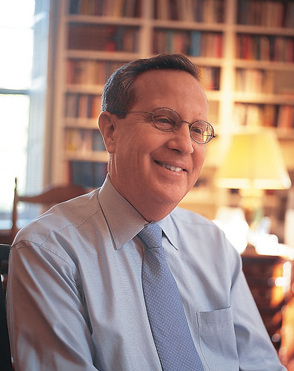 loading
loading
Q&A: Rick LevinYale provosts: farm team for academe?Choosing Yale's top academic officer.  Mark OstowView full imageY: It was announced in June that Yale's provost, Andy Hamilton, would become the next vice chancellor -- that is, head -- of Oxford University. The question of the hour on campus is: have you chosen a new provost? L: By the time your readers see this, I will have announced the appointment of Peter Salovey [’86PhD], a leading scholar in social psychology and the dean of Yale College, as our next provost. Peter's popularity with undergraduates is widely known. This summer, in numerous conversations, I was pleased to see my own impression confirmed: Peter is greatly respected and admired by the faculty for his intelligence, openness, responsiveness, integrity, and fairness, and he is a pleasure to work with. Y: Yale is four for four now in provosts that have been recruited to head major universities. L: When Andy's appointment was announced, my daughter -- a McKinsey consultant -- called and said, "Dad, you seem to have a problem retaining your people!" [Laughs.] I'm delighted that each provost I've worked with has had the opportunity to move on to greater responsibility. Judith Rodin [who became president of the University of Pennsylvania], Alison Richard [vice chancellor of Cambridge], Susan Hockfield [president of MIT], and now Andy Hamilton were all exceptionally well prepared for institutional leadership. If you look at the officers, deans, and directors of Yale as a group, I don't think there's any university that comes close to matching the quality of people we have here. Y: Many alumni would probably like to know what a provost is. L: The provost is the chief academic officer of the university and has day-to-day management responsibility for the schools and for faculty development. The provost controls the budgets of the academic units, allocates faculty positions to schools and departments, and decides which areas of faculty expertise should be sought in filling each of those positions. The provost also works with all the schools and departments on their long-term strategic plans. It's a very important job. The provost shapes the faculty, and that's ultimately the essence of the academic enterprise. Y: What qualities were you looking for in the search? L: First and foremost, I wanted a leader capable of deepening and strengthening Yale's academic excellence. I wanted someone with exceptional judgment about people and the ability to act decisively, someone who has the respect of the faculty and embodies the values of the institution. And, as with all senior leadership jobs, an essential quality is openness and ability to listen. A provost must empathize with the faculty in their aspirations, even when he or she denies or trims their requests for additional funding. Peter Salovey has all these qualities. Y: And presumably you didn't consider anyone who hasn't had an administrative job before. L: I considered some candidates who had been department chairs but had not held more senior administrative jobs. One of the nice by-products of an environment in which faculty contribute to major decisions through work on committees is that people get training in thinking about issues outside the narrow domain of their departments and scholarly disciplines. Otherwise, many faculty would not have a broad understanding of how the disciplines interact and how the educational programs of Yale College work, for example. It's no coincidence that many of the second generation of leaders during my tenure served on the Brodhead Committee [which revised the college curriculum]. I deliberately selected that committee to include people who had promise of possible future leadership roles. Jon Butler [now Graduate School dean], Peter Salovey, and Andy Hamilton were all members. Y: In the provost's office, there are eight deputy and associate provosts for the entire university. One of them is responsible for 17 departments and programs. Another is responsible for three departments and the schools of architecture, art, divinity, drama, and music. How do they do it? Aren't they understaffed? L: You've put your finger on something that is a concern to me. We're very lean in terms of our administrative staffing. This has advantages; we are less bureaucratic than some of our peers. And having a wide scope of responsibilities gives one a broad perspective on the institution. But some of our deputy and associate provosts have portfolios that are too large, and there are some nonacademic areas that historically have been covered by the provost's office that don't need to be. We will be making some changes in responsibilities in the course of this transition, and we are likely to increase the size of the staff that supports the deputy and associate provosts. Y: When you look back on how you chose Andy, what stands out? L: When Alison Richard and I recruited Andy to the faculty of the chemistry department 11 years ago, it was obvious that this was a person with leadership ability. He displayed great vision. In the process of recruitment, he wasn't just thinking, "What do I need for my research?" but "How do we build a great chemistry department?" He was especially concerned about the facilities, and during his recruitment we committed to building a new chemistry research building [which opened in 2005]. Peter, too, always puts the institution above himself.
The comment period has expired.
|
|